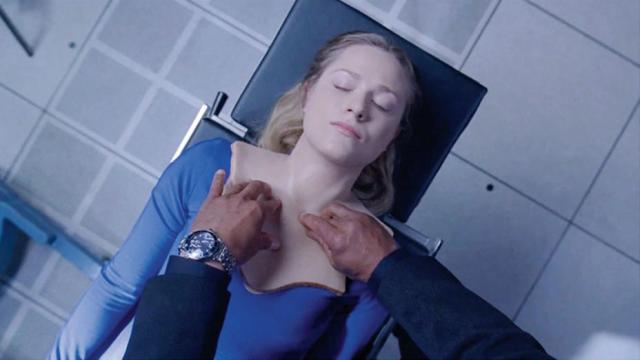Can the U.S. fix unemployment with ‘Universal Basic Jobs’?

Stephanie Keith / Getty
- A new book from Pavlina Tcherneva, chair of the economics department at New York’s Bard College, makes the case for a “Job Guarantee” federal program.
- The program would grant jobs to every citizen who’s willing and able to work.
- A 2019 poll found that a majority of Americans would support a federally funded jobs program.
Since COVID-19 began spreading across the U.S. earlier this year, more than 45 million Americans have filed for unemployment. The Federal government has passed a $2.3 trillion economic stimulus package. And unemployment hit Depression-era levels, with the Federal Reserve projecting that rates will hover around 9.3 percent by the end of 2020.
“This is the biggest economic shock, in the U.S. and the world, really, in living memory,” Federal Reserve Chair Jerome Powell said at a news conference in June. “We went from the lowest level of unemployment in 50 years to the highest level in close to 90 years, and we did it in two months.”
To economist Pavlina Tcherneva, the pandemic didn’t just present the American economy with a unique set of problems, but rather revealed its built-in flaws that have long prevented millions of Americans from securing decent jobs.
In her new book, “The Case for a Job Guarantee”, Tcherneva offers an ambitious policy proposal that calls for the federal government to provide living-wage jobs and benefits to anyone willing and able to work.
“At bottom,” Tcherneva writes in the book, “the Job Guarantee is a policy of care, one that fundamentally rejects the notion that people in economic distress, communities in disrepair, and an environment in peril are the unfortunate but unavoidable collateral damage of a market economy.”
The idea of using federal funding to create jobs isn’t new. It’s found in the U.N. Declaration of Human Rights, Franklin D. Roosevelt’s proposed Economic Bill of Rights, and was again debated during the Civil Rights Movement. It’s also a key component of the Green New Deal, a suite of policy proposals that seeks to aggressively tackle climate change and economic inequality.
In Tcherneva’s vision, the Job Guarantee would act as a sort of buffer. Here’s a bit on how a Job Guarantee might work in the U.S.:
Jobs granted through the program would offer at least $15 per hour, and this base wage would remain flexible to match inflation over time. The Job Guarantee would also provide workers with health insurance, paid leave, childcare, and possibly fewer hours than the current 40-hour standard work week.
Establishing standards like these, Tcherneva argues, would pressure private firms to treat and pay workers better, considering that now they’d have more employment options and wouldn’t have to settle for poor working conditions.
Across the U.S., unemployment offices would be converted into employment offices. The unemployed would be able to enter these offices and “leave with a list of employment options, public-service opportunities you’ll be able to access locally,” Tcherneva told Vox.
What would those jobs look like? Tcherneva offered some examples: performing weatherization on a local hardware store, replacing lead pipes on a construction site, helping out at a homeless shelter, or working on local alternative-energy projects.
The federal government would remain mostly hands off, allowing state and local governments to decide which public projects to pursue, and how to allocate resources.
In the current economic system, unemployment spreads like a virus: people lose their jobs, stop spending money, businesses are forced to shut down, and so on.
A Job Guarantee could act as a buffer that absorbs unemployed people before they fall to the bottom rungs of the economic ladder. And this could help to stabilize the economy during recessions, assuming these workers continued to spend money. As the economy improves, workers could move back to their previous jobs, or to other employment options.
Tcherneva doesn’t deny that a Job Guarantee would require massive public investment, but she notes that what’s lacking isn’t the money, but political will. What’s more, she notes the high social costs of having a large swath of the American workforce remain, more or less, permanently unemployed.
“I came to the Jobs Guarantee from a macroeconomic perspective — the realization that we were using unemployed people as a kind of “buffer stock” to control inflation,” she told the Los Angeles Times. “Having unemployed people means that when the economy grows, those people would be there to take those jobs.”
“But what if we could use employment as a buffer stock? That’s obviously the superior option. I realized that you couldn’t just argue about this as a macroeconomic policy, you have to bring in the human rights framework, the moral framework. You have to think about the kind of neglect, the health effects, the pain that unemployment inflicts on people who want to work.”
According to projections from the Levy Institute, with which Tcherneva is affiliated, the program would cost about 1.5 percent of the U.S. GDP, boost real GDP by half a trillion dollars, and create 3 to 4 million jobs.
The Job Guarantee proposal has no shortage of critics. What’s more, these points are just a brief overview of what the program seeks to establish. But, surprisingly, more Americans seem to support the idea than you may realize.
According to a 2019 poll from The Hill-HarrisX, more than 70 percent of Americans said they would “somewhat” or “strongly” support a federal program that created jobs for the unemployed.





